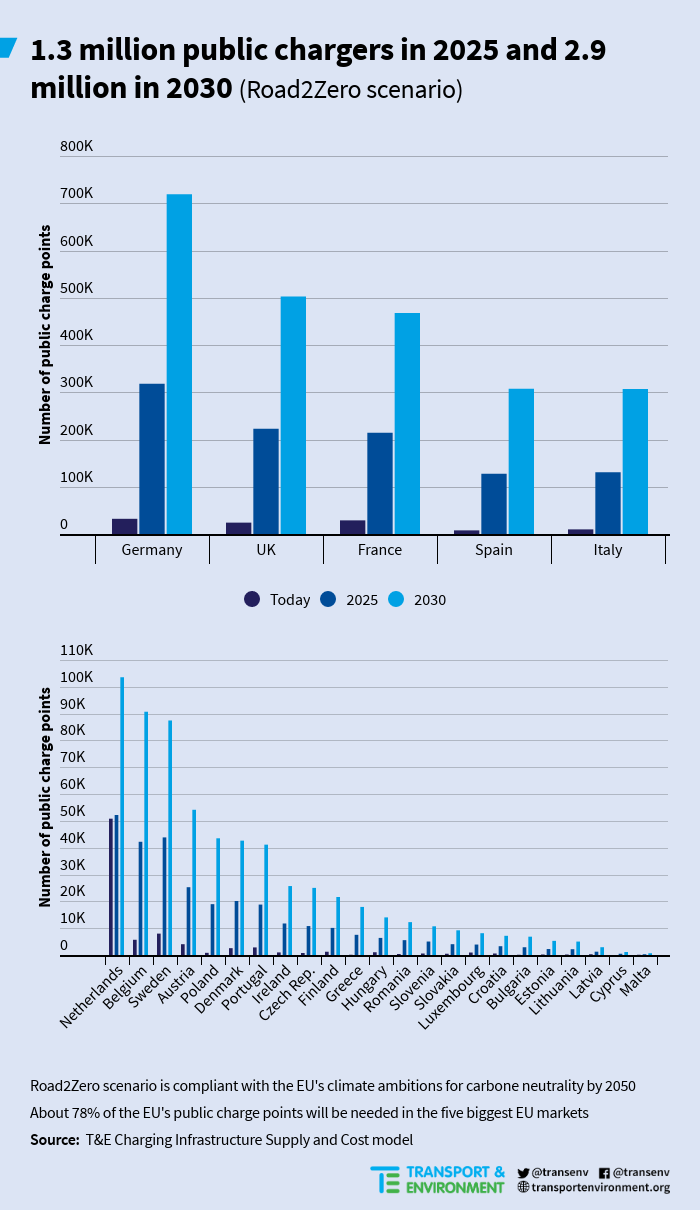
Interested in this kind of news?
Receive them directly in your inbox. Delivered once a week.
To finance the necessary chargers, the analysis estimates Europe needs €20 billion over the next 11 years, or €1.8 billion a year on average, in private and targeted public investment. This is just 3% of the EU’s annual spend on road infrastructure today. T&E argues this is a business opportunity and co-financing can come from the European investment plan, which will support €1 trillion of sustainable investment over the next decade under the EU Green Deal.
Home and workplace charging must be prioritised, and between 20-30% of these chargers will need to be in disadvantaged and less densely populated areas to ensure everyone benefits from zero-emissions vehicles, said T&E.
Lucien Mathieu, emobility analyst of Transport & Environment, said: “The Green Deal for transport can only happen with zero-emission infrastructure. This means putting money into setting up the network of public chargers, especially at home and at work, and not in building more fossil gas pipelines. So far the number of charging points has kept pace with demand, but the coming electric surge needs to be supercharged by vastly expanding the charging network.”
The upcoming revision of the EU’s Alternative Fuels Infrastructure Directive is the critical moment for the European Commission to help drivers charge smoothly across the bloc and help businesses ride the electrification wave, T&E said. It needs to be reviewed this year and should be turned into a regulation with ambitious targets to ensure a swift and harmonised roll-out of chargers throughout Europe.
Lucien Mathieu said: “The shift to EVs will create a multi-billion euro market opportunity for European industry in the grid works, and manufacturing, installation and maintenance of public charging. The EU must do everything it can to fight the climate emergency while supporting jobs in Europe.”
T&E’s analysis is based on a new public charging infrastructure supply metric it has developed to help regulators set targets and determine how many public chargers will be needed.
Transport is Europe’s biggest climate problem, representing more than a quarter (27%) of the bloc’s total greenhouse gas emissions. Cars emit 44% of transport CO2 emissions and their impact is still growing. To realise the ambition of the EU Green Deal, Europe will need 40% of new cars to be zero-emissions in 2030, and will need to sell the last combustion engine car by 2035 at the very latest.


